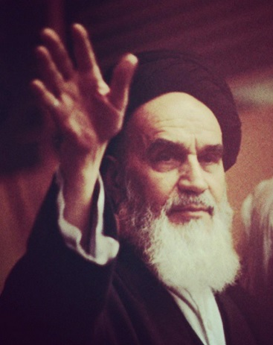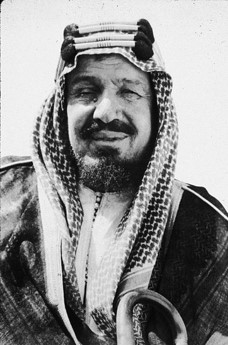Cameron Glenn
Government
Iran and Saudi Arabia both claim to be model states based on Islam. But Iran is a theocracy with democratic elements, and Saudi Arabia is a hereditary monarchy. Iran’s political system is based on Shiism, while Saudi Arabia has strong ties to Wahhabism, a conservative branch of Sunni Islam.
The Constitution Article 2 The Islamic Republic is a system based on belief in: 1.the One God (as stated in the phrase “There is no god except Allah”), His exclusive sovereignty and the right to legislate, and the necessity of submission to His commands; 2.Divine revelation and its fundamental role in setting forth the laws” Preamble “In the view of Islam, government does not derive from the interests of a class, nor does it serve the domination of an individual or a group. It represents rather the crystallization of the political ideal of a people who bear a common faith and common outlook… Our nation, in the course of its revolutionary developments, has cleansed itself of the dust and impurities that accumulated during the taghuti [idol-worshipping] past and purged itself of foreign ideological influences, returning to authentic intellectual standpoints and world-view of Islam. It now intends to establish an ideal and model society on the basis of Islamic norms.” | The Basic Law of Governance Chapter 1, Article 1 The Kingdom of Saudi Arabia is a sovereign Arab Islamic State. Its religion is Islam. Its constitution is Almighty God's Book, The Holy Qur'an, and the Sunna (Traditions) of the Prophet (PBUH). Chapter 2, article 7 Government in the Kingdom of Saudi Arabia derives its authority from the Book of God and the Sunna of the Prophet (PBUH), which are the ultimate sources of reference for this Law and the other laws of the State. Chapter 2, Article 8 Governance in the Kingdom of Saudi Arabia is based on justice, shura (consultation) and equality according to Islamic Sharia. “The Saudi State has become a distinguished model of politics and government in modern political history.” “The relationship between citizens and state officials is founded on solid and deep-rooted traditions, compassion, mutual respect and loyalty stemming from the sincere and firm convictions in the hearts of this country's people generation. There is no difference between the ruler and the ruled. They are equal before the law of God, and they are all equal in their love of this homeland and in their eagerness to maintain its safety, unity, pride and progress.” |
 Iran's political system is based on Shiism. Shiites make up around 10 percent of the world's Muslims, but 90 percent of Iranians are Shiites. The split between Sunnis and Shiites dates back to the Prophet Mohammad's death in the seventh century. Shiites believed that Ali, the Prophet's son-in-law and cousin, should be his immediate successor. But Sunnis believed that the Muslim community could select a new leader without blood ties to the Prophet.
Iran's political system is based on Shiism. Shiites make up around 10 percent of the world's Muslims, but 90 percent of Iranians are Shiites. The split between Sunnis and Shiites dates back to the Prophet Mohammad's death in the seventh century. Shiites believed that Ali, the Prophet's son-in-law and cousin, should be his immediate successor. But Sunnis believed that the Muslim community could select a new leader without blood ties to the Prophet. The royal family has strong links to Wahhabism, a conservative branch of Sunni Islam. The relationship dates back to the 18th century. Mohammad Ibn Abd al Wahhab, founder of the Wahhabi movement, sought protection from Mohammad Ibn Saud and his tribe in 1744. In the early 20th century, Bedouin followers of Wahhabism, known as the Ikhwan, were instrumental in aiding Abdul Aziz Ibn Saud in his military campaign to unify much of the Arabian Peninsula.
The royal family has strong links to Wahhabism, a conservative branch of Sunni Islam. The relationship dates back to the 18th century. Mohammad Ibn Abd al Wahhab, founder of the Wahhabi movement, sought protection from Mohammad Ibn Saud and his tribe in 1744. In the early 20th century, Bedouin followers of Wahhabism, known as the Ikhwan, were instrumental in aiding Abdul Aziz Ibn Saud in his military campaign to unify much of the Arabian Peninsula. Iran | Saudi Arabia |
The Constitution “Legislation setting forth regulations for the administration of society will revolve around the Qur'an and the Sunnah. Accordingly, the exercise of meticulous and earnest supervision by just, pious, and committed scholars of Islam (al-fuqaha' al-'udul) is an absolute necessity.” “The judiciary is of vital importance in safeguarding the rights of the people in accordance with the line followed by the Islamic movement, and the prevention of deviations within the Islamic nation. Provision has therefore been made for the creation of a judicial system based on Islamic justice and operated by just judges with meticulous knowledge of the Islamic laws. Article 32 “No one may be arrested except by the order and in accordance with the procedure laid down by law… Article 34 “It is the indisputable right of every citizen to seek justice by recourse to competent courts. All citizens have right of access to such courts, and no one can be barred from courts to which he has a legal right of recourse. Article 35 “Both parties to a lawsuit have the right in all courts of law to select an attorney, and if they are unable to do so, arrangements must be made to provide them with legal counsel.” | The Basic Law of Governance Chapter 6, Article 48 The Courts shall apply rules of the Islamic Sharia in cases that are brought before them, according to the Holy Qur'an and the Sunna, and according to laws which are decreed by the ruler in agreement with the Holy Qur'an and the Sunna. Chapter 6, Article 55 The King shall rule the nation according to the Sharia. He shall also supervise the implementation of the Sharia, the general policy of the State, and the defense and protection of the country. Chapter 5, Article 26 The State shall protect human rights in accordance with the Sharia. Chapter 6, Article 46 The Judiciary is an independent authority. The decisions of judges shall not be subject to any authority other than the authority of the Islamic Sharia. Chapter 6, Article 47 All people, either citizens or residents in the Kingdom, are entitled to file suit on an equal basis. The Law shall specify procedures for this purpose. |
Iran ranks second in the world for executions, behind China. The death penalty applies to a wide range of crimes, including drug-related offenses, adultery, rape, sodomy, and insulting the Prophet Mohammad. Iran has seen a sharp rise in executions during the past few years. The government announced 289 executions in 2014, but there may have been hundreds more that were not formally acknowledged, according to Amnesty International. More than 800 people were executed between January and October 2015, putting Iran on track to have its highest execution rate in 25 years.
- Sharia courts, which are the largest network of courts and hear the most cases
- The Board of Grievances, which manages cases that involve the government
- Committees in government ministries that address specific issues, such as labor disputes
Saudi Arabia ranks third in the world for executions. Less than half of death penalty cases are for murder, with the rest for crimes such as non-violent drug offenses and sorcery. At least 90 people were executed in 2014, and 151 were executed between January and November 2015 – the highest recorded figure in two decades.
Iran | Saudi Arabia |
The Constitution Preamble “With due attention to the Islamic content of the Iranian Revolution…the Constitution provides the necessary basis for ensuring the continuation of the Revolution at home and abroad. In particular, in the development of international relations, the Constitution will strive with other Islamic and popular movements to prepare the way for the formation of a single world community…and to assure the continuation of the struggle for the liberation of all deprived and oppressed peoples in the world.’” Supreme Leader Ayatollah Ali Khamenei, in a speech on Nov. 2, 2015 “In the Constitution, Islam sets the criterion for foreign policy. Therefore, taking a stance vis-à-vis different countries and issues must lie within a religious framework.” | The Basic Law of Governance Chapter 5, Article 23 The State shall protect the Islamic Creed, apply the Sharia, encourage good and discourage evil, and undertake its duty regarding the Propagation of Islam (Da'wa). |
 Iran has had much more success assisting armed organizations that share its goals and values. It has cultivated spheres of influence in Shiite communities, particularly in Iraq and Afghanistan, and aided Palestinian Islamic groups Hamas and Islamic Jihad and Hezbollah in Lebanon. Iran reportedly sends Hezbollah between $100 million and $200 million per year, and has sent Hamas as much as $300 million per year, according to the Congressional Research Service. But precise figures are not known.
Iran has had much more success assisting armed organizations that share its goals and values. It has cultivated spheres of influence in Shiite communities, particularly in Iraq and Afghanistan, and aided Palestinian Islamic groups Hamas and Islamic Jihad and Hezbollah in Lebanon. Iran reportedly sends Hezbollah between $100 million and $200 million per year, and has sent Hamas as much as $300 million per year, according to the Congressional Research Service. But precise figures are not known.The goal of these relationships, however, has not been to gain territory. Iran’s only territorial disputes are with the United Arab Emirates over three small Gulf islands.

This piece is part of a 4-part series on Iran and Saudi Arabia.
- Part 1: Islam's Arch Rivals
- Part 2: Government & Ideology
- Part 3: Leadership
- Part 4: Women & Minorities
Cameron Glenn is a senior program assistant at the U.S. Institute of Peace.
